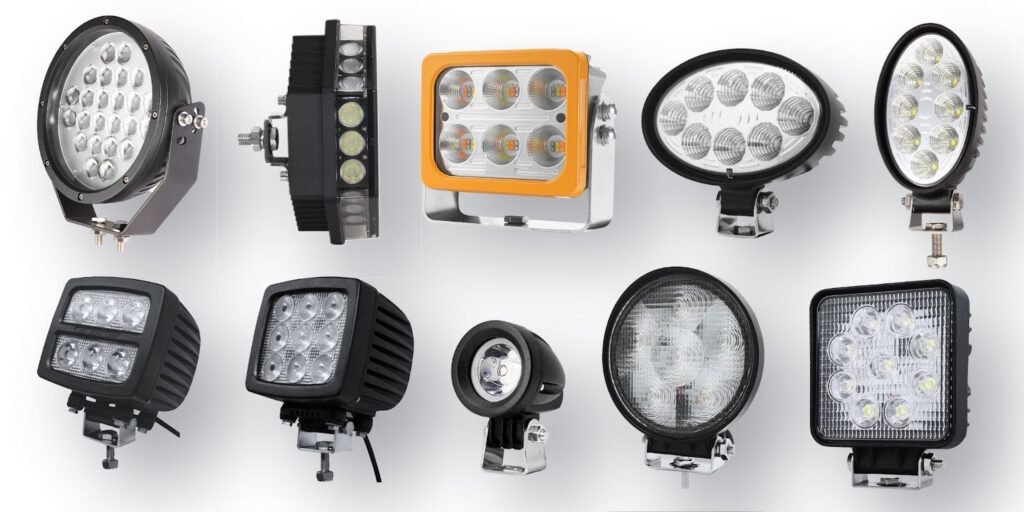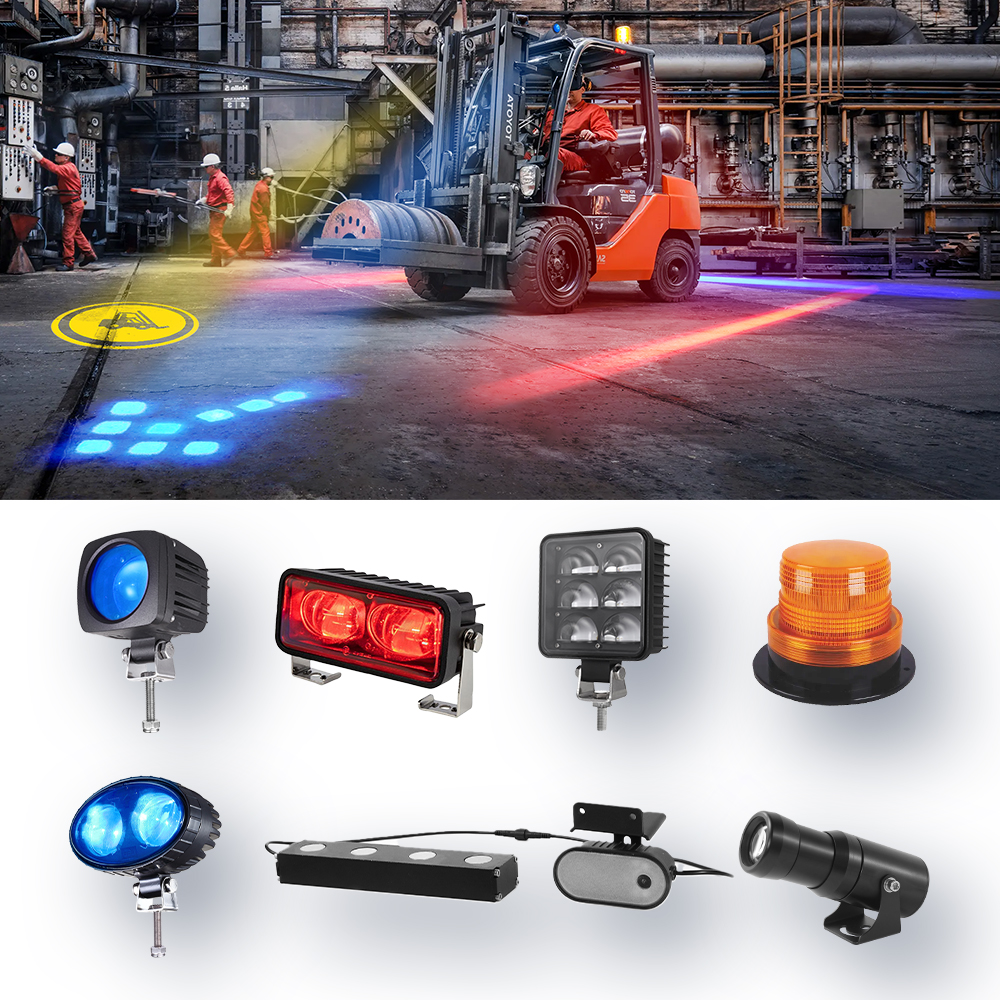Work lights are essential tools for construction sites, automotive repairs, and emergency preparedness. Among the many types available, two of the most common are rechargeable and non-rechargeable work lights. Additionally, many users are now comparing solar vs. non-solar work lights.
So, which type should you choose? Let’s break it down by looking at the pros, cons, and ideal uses of each.
Understanding the Four Core Categories

Before dissecting pros, cons, and hidden trade-offs, it helps to define exactly what we mean by each lighting type.
Rechargeable Work Lights
- Integrated energy storage
These units contain lithium-ion, lithium-polymer, or occasionally nickel-metal hydride packs sealed inside the housing. Because the battery is permanent (or at least not designed for daily removal), charging typically happens through a USB-C port, magnetic pogo-pin pad, or slide-in cradle.
- Varied form factors
From slim inspection wands that slip behind brake rotors to 6,000-lumen site floods with tripod mounts, the rechargeable class is broad.
- Smart-power electronics
Modern drivers regulate voltage, monitor cell temperature, and even throttle brightness to stretch runtime or protect pack health.
Non-Rechargeable Work Lights
- Two sub-classes
Disposable-battery-based models that rely on alkaline, lithium primary, or zinc-carbon cells.
Corded AC models that plug directly into wall outlets or generators, sometimes via daisy-chainable pass-through sockets so multiple work lights can run in series.
- Constant-brightness drivers
Because the work lights either draw from the grid or a fresh set of primaries, designers can tune for full output without worrying about charge-cycle fatigue.
Solar Work Lights
- Photovoltaic harvesting
A silicon panel (usually monocrystalline to maximize efficiency per square inch) converts sunlight into DC current, which either feeds an internal battery or powers the LEDs directly if the load is low enough.
- Off-grid independence
With no reliance on the wall, solar units shine where generators are banned or extension cords become trip hazards—remote ranch fencing, desert road crews, disaster relief camps.
- Environmental promise
Zero operational carbon footprint once installed, provided the manufacturing emissions are amortized across years of sunny cycles.
Non-Solar Work Lights
- Everything else
From classic halogen trouble lights to next-gen COB (chip-on-board) LED towers, non-solar work lights cover any product that does not incorporate a photovoltaic panel.
- Predictable runtime
Because they ingest power from batteries or the grid, performance is largely immune to weather, latitude, or seasonal daylight variance.
- Higher instantaneous output ceiling
Freed from the wattage cap of a small PV panel, non-solar units routinely push 10,000-plus lumens, rivaling small generator light plants.
Understanding these categories sets the stage for a detailed evaluation of features, drawbacks, and situational fit.
The Disadvantages of Rechargeable Lights

- Finite runtime ceiling
No matter how efficient LEDs grow, a battery’s chemical reservoir empties eventually.
- Charging downtime creates scheduling friction
Unlike swapping fresh primaries, recharging locks the light into a time-penalty box. Even fast-charge protocols (e.g., 65 W USB-C) can require 45 minutes to push a 5 Ah pack from red-line to 80 %. Workers must therefore stock spare work lights or stagger charge rotations.
- Performance decay over lifecycle
Lithium-ion cells suffer capacity fade—often 20 % after 300 full cycles—along with increased internal resistance that saps peak current delivery, trimming lumen output under turbo modes.
- Higher acquisition cost and theft risk
Because rechargeable lights embed pricey cells and complex electronics, sticker prices rise. On large job sites, that value density makes them attractive targets for “walk-off” losses, prompting extra tracking or lockup procedures.
- Specialized disposal requirements
When the pack finally dies, environmental compliance demands lithium-battery recycling, less convenient than tossing spent alkalines into municipal trash (though laws increasingly restrict that too).
Taken together, these Disadvantages of rechargeable lights reveal why some teams still favor simpler, one-time-use power sources.
Pros and Cons of Non-Rechargeable Lights

Although “non-rechargeable” might sound dated in an age of USB-everything, these work lights remain indispensable in scenarios where reliability eclipses sustainability.
Advantages (Extended Discussion)
- True plug-and-play immediacy
Open the packaging, insert the provided batteries (or click into a socket), and you have full-brightness illumination. There is no onboarding curve teaching apprentices to respect charge percentages.
- Uninterrupted multi-shift operation
A single 100-ft 12-gauge extension line can power a string of seven daisy-chained 1,500-W halogen towers for a concrete finishing marathon. Grid supply outlasts even the hardiest rechargeable bank.
- Predictable lumen output across extreme temperatures
Alkaline D-cells may sag in frigid barns, but corded AC drivers keep LEDs pushing full current as long as the circuit breaker holds. Fire-and-rescue crews battling a blizzard rely on that certainty.
- Lower-tech maintainability
No soldered battery tabs, proprietary BMS chips, or firmware glitches. A failed lights often comes down to a broken filament (in legacy bulbs) or frayed cord that any journeyman electrician can resplice.
- Emergency competence
Disaster kits stock non-rechargeable headlights because shipping spare AA cells into a hurricane zone is simpler than trucking in charging generators and fuel—assuming the latter isn’t rationed for hospitals first.
Why Choose Non-Solar, Non-Rechargeable LED Work Lights?
When reliable, continuous lighting is essential, especially in demanding work environments, non-solar, non-rechargeable LED work lights remain a top choice. Unlike solar-powered systems, these lights deliver consistent brightness without relying on weather conditions or battery limitations.
Outstanding Performance on Demand
- High Lumen Output
Powered directly by AC mains or replaceable batteries, these work lights can deliver impressive brightness levels, often exceeding 20,000 lumens. Perfect for nighttime construction, industrial maintenance, or emergency response, they truly offer “daylight at the flick of a switch.”
- No Need for Solar Setup or Battery Management
Workers can plug and play without learning how to angle solar panels, manage charge controllers, or monitor battery life. If you’re familiar with using an extension cord, you’re ready to go.
Seamless Compatibility with Existing Worksite Power
- Use Available Power Sources On-Site
Most job sites have temporary power systems already in place. These LED lights integrate easily, running on the same generators or service panels used for other heavy equipment—no additional infrastructure needed.
When it comes to high-performance lighting solutions, the XRL-1335J Intelligent LED Working Light stands out as a premier choice. Engineered for durability, efficiency, and smart functionality, this state-of-the-art work light is ideal for a wide range of demanding environments, from automotive repairs to outdoor job sites.
Conclusion
Meanwhile, the solar revolution dazzles with visions of net-zero job sites, but the very sun that empowers them also hides behind clouds, limiting exposure in crucial hours. Those Disadvantages of solar work lights force many crews to keep trusty Non-solar work lights on standby, acknowledging that generators, cords, and disposable batteries are not disappearing soon.





